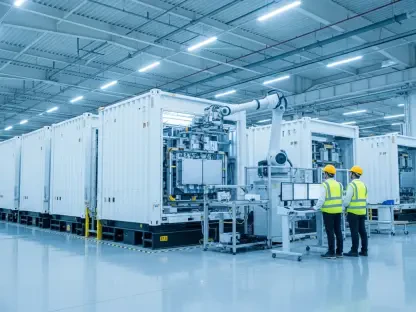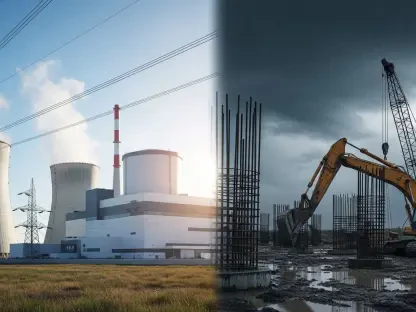China’s electric vehicle (EV) industry is rapidly transforming the global automotive landscape, driving the world toward a sustainable, post-carbon energy era. With its massive market share, technological advancements, and significant government backing, the Chinese EV sector is not only reshaping domestic transportation but also exerting a profound influence on global trends. This article delves into the various facets of China’s EV market, its environmental impact, government support, technological advancements, and the international expansion of Chinese EV giants.
Market Dominance
China’s Leading Position in the EV Market
China’s dominance in the electric vehicle market can be attributed to a combination of government policies, technological advancements, and strong domestic demand.
China has firmly established itself as the largest EV market in the world, with an unprecedented growth trajectory that outpaces other major economies. Last year, over 50% of all cars sold in China were electric vehicles, a testament to the country’s commitment to sustainable transportation. This dominance is further underscored by the fact that approximately 80% of all EVs sold worldwide were manufactured in China. The sheer volume of production and sales within the Chinese market highlights a concerted effort to dominate the EV sector on a global scale.
The expansion of China’s EV market has not just been about quantity but also about technological innovation and quality improvements. Leading Chinese manufacturers such as BYD and NIO have been consistently rolling out cutting-edge models that cater to varying consumer needs, from affordable compact cars to luxury electric SUVs. The rapid pace of development has also seen significant advancements in battery technology and autonomous driving systems, positioning Chinese brands as pioneers in the next-generation automotive industry.
Impact on Global Automotive Industry
The rapid growth of China’s EV market is causing significant disruption in the global automotive industry, challenging legacy automakers to adapt or face declining market shares. Western and Japanese automakers, long accustomed to their dominant positions, are struggling to keep up with the pace of change, leading to declining sales and the closure of factories and showrooms. Even prestigious brands like Porsche are scaling down their operations in China due to intense competition from local EV manufacturers that offer innovative and cost-effective solutions.
This disruption is not only reshaping the competitive landscape but is also driving traditional automakers to accelerate their own EV initiatives. Companies that once relied heavily on internal combustion engines are now hastening the development of electric and hybrid models to retain relevance in a rapidly changing market. The pressure to innovate has led to strategic partnerships and increased investment in EV technology, battery development, and autonomous driving systems, as these legacy players strive to keep pace with their Chinese counterparts. The shift towards electrification is also influencing global supply chains, with a growing emphasis on securing materials for battery production and developing sustainable manufacturing processes.
Environmental Benefits
Improvements in Air Quality
The exponential growth of EVs and new energy vehicles (NEVs) in Chinese cities such as Shanghai and Guangzhou has led to notable improvements in the Air Quality Index (AQI). The reduction in emissions from traditional internal combustion engine vehicles has contributed to cleaner air and a healthier environment for urban residents. Studies have shown that areas with high EV adoption rates experience significant declines in nitrogen dioxide and particulate matter levels, which are major pollutants contributing to respiratory and cardiovascular diseases.
These environmental benefits extend beyond air quality improvements. The shift to electric vehicles reduces the overall carbon footprint of transportation, contributing to global efforts to combat climate change. By cutting emissions from one of the largest polluting sectors, China is making a significant impact on global greenhouse gas levels. Additionally, the reduced noise pollution associated with EVs enhances the quality of life in densely populated urban areas, creating quieter and more livable cities. The transition to EVs aligns with broader sustainability goals, positioning China as a leader in environmental stewardship.
Contribution to Carbon Neutrality Goals
China’s aggressive push towards EV adoption is part of its broader goal to achieve carbon neutrality by 2060, a target that requires transformative changes across various sectors. The environmental benefits of this transition are significant, as the country reduces its reliance on fossil fuels and moves towards a more sustainable energy future. The Chinese government has set ambitious targets for reducing carbon emissions and increasing the share of renewable energy in the national energy mix, with electric vehicles playing a crucial role in this strategy.
The integration of EVs with renewable energy sources, such as wind and solar power, further enhances their environmental impact. By promoting policies that encourage the use of green electricity for charging EVs, China is creating a synergistic effect that amplifies the benefits of both technologies. This holistic approach supports the transition to a low-carbon economy and sets a precedent for other nations to follow. The commitment to carbon neutrality also drives innovation and investment in green technologies, fostering a dynamic ecosystem that supports sustainable development.
Government Support
The government has consistently shown its commitment to supporting innovation and progress within the financial sector. Numerous initiatives have been launched to foster a conducive environment for emerging technologies, including favorable regulatory policies and financial incentives aimed at encouraging investment and development. This support has been instrumental in driving advancements and ensuring that the financial sector remains robust and competitive on a global scale.
Massive Investments in the EV Industry
The Chinese government has invested over $200 billion in the EV industry over the past decade, demonstrating a steadfast commitment to developing the sector. This substantial financial support has been crucial in driving the rapid growth and development of the industry. Subsidies have also been extended to the development of batteries, wind turbines, solar panels, and other green technologies, creating a comprehensive framework that supports the entire clean energy ecosystem. Government-backed research and development initiatives have spurred advancements in key areas such as battery efficiency, vehicle range, and autonomous driving capabilities.
These investments have not only accelerated the deployment of EVs but also stimulated the creation of a robust supply chain. By fostering domestic production of critical components, China has reduced its dependence on foreign suppliers and ensured the resilience of its EV industry. The government’s strategic vision encompasses everything from raw material procurement to end-of-life vehicle recycling, promoting sustainability throughout the product life cycle. This holistic approach has positioned China at the forefront of the global transition to electric mobility.
Policies and Incentives
Government policies and incentives have played a pivotal role in promoting EV adoption across China. Measures such as subsidies for EV purchases, tax breaks, and the development of charging infrastructure have made electric vehicles more accessible and attractive to consumers. These initiatives address common barriers to EV adoption, such as higher upfront costs and limited charging options, thereby accelerating the transition to electric mobility. Subsidies for battery manufacturing and renewable energy generation further support the integration of EVs within a cleaner energy grid.
Local governments have also implemented measures to encourage EV use, including preferential access to parking and lanes reserved for electric vehicles. In cities with stringent air quality regulations, EVs often enjoy exemptions from driving restrictions, providing a practical incentive for consumers to switch to cleaner transportation options. Additionally, public-private partnerships have been instrumental in expanding the charging network, ensuring that EV drivers have access to reliable and convenient charging points. These collaborative efforts between government, industry, and academia create an enabling environment for sustained growth in the EV sector.
Vertical Integration
Benefits of Vertical Integration
Chinese EV manufacturers, such as BYD, have adopted a vertically integrated production model that spans the entire value chain. This approach encompasses everything from mining raw materials to global distribution, leading to benefits in quality control, speed, and cost efficiency. By integrating various stages of production, these companies can ensure high standards and streamline operations, resulting in products that are both innovative and affordable. As a result, Chinese EVs are generally half the price of those produced in foreign markets, giving them a competitive edge in both domestic and international arenas.
Vertical integration also enables rapid responsiveness to market demands and technological advancements. When a new technological breakthrough occurs, vertically integrated manufacturers can swiftly incorporate it into their production processes without relying on external suppliers. This agility allows them to stay ahead of the competition by offering cutting-edge features and maintaining a strong market presence. Moreover, by controlling the entire supply chain, Chinese EV makers can mitigate risks associated with supply disruptions and price volatility, ensuring steady production and delivery.
Competitive Advantage
The vertically integrated model provides Chinese EV makers with a significant competitive advantage, as evidenced by their rapid growth and success on the global stage. By controlling the entire supply chain, these companies can ensure the consistent quality of their products and respond quickly to market demands. This efficiency has not only driven down costs but also fostered innovation, enabling Chinese manufacturers to introduce advanced features and technologies ahead of their rivals. The ability to manage the supply chain in-house allows for better coordination and optimization, resulting in streamlined operations that enhance overall performance.
Vertical integration also supports sustainability goals by allowing manufacturers to implement environmentally friendly practices throughout the production process. From responsible sourcing of raw materials to eco-friendly manufacturing techniques and efficient recycling programs, vertically integrated EV makers can align their operations with global sustainability standards. This commitment to eco-friendly practices enhances their reputation and appeal to environmentally conscious consumers, contributing to increased market share. The strategic advantages conferred by vertical integration have established Chinese EV manufacturers as formidable players in the global automotive industry.
International Expansion
The company’s strategic push for international expansion aims to tap into emerging markets and diversify its revenue streams. By establishing a strong presence in these regions, the company hopes to not only increase its market share but also build lasting relationships with local partners and customers. The move is expected to enhance the company’s competitive edge and solidify its position as a global market leader.
Global Presence of Chinese EV Makers
Chinese EV manufacturers are rapidly expanding their presence globally, establishing a formidable footprint in key markets around the world. They are opening factories abroad and taking over existing factories from legacy automakers, demonstrating their commitment to international growth. Notable examples include BYD acquiring a Ford factory in Brazil and building new plants in Hungary and Turkey. These strategic moves are reshaping the global automotive industry, as Chinese manufacturers bring their cost-effective and innovative EV solutions to new regions.
The expansion is not limited to production facilities alone. Chinese EV makers are also investing in marketing, sales networks, and after-sales services to build strong brand recognition and customer loyalty in international markets. They are forming partnerships with local companies to leverage their market expertise and distribution channels, facilitating smoother market entry and adaptation to local consumer preferences. By establishing a comprehensive presence in key regions, Chinese EV manufacturers are positioning themselves to capture significant market share and influence global automotive trends.
Challenges and Opportunities
The growing complexities of the digital asset landscape present both significant challenges and unique opportunities for regulators, investors, and innovators alike.
While Chinese EV makers are making significant inroads into international markets, they also face challenges that require strategic adjustments and innovative solutions. Regulatory dynamics, such as the EU’s increased tariffs on Chinese EV imports, necessitate responses that align with compliance and market access goals. These tariffs, which can reach up to 37%, are designed to protect local industries but also pose obstacles for Chinese companies aiming to penetrate the European market. To circumvent these barriers, Chinese manufacturers are exploring the establishment of production facilities within the EU. This approach not only helps avoid tariffs but also allows for closer collaboration with European partners and adherence to local regulations.
These challenges also present opportunities for Chinese companies to strengthen their global presence and enhance their competitive edge. By setting up manufacturing plants in Europe, Chinese manufacturers can localize production, reduce shipping costs, and create jobs, thereby gaining favor with local governments and consumers. Additionally, partnerships with European firms can facilitate technology transfer and innovation, leading to the development of products tailored to the preferences and standards of the European market. The ability to navigate regulatory landscapes and form strategic alliances underscores the adaptability and resilience of Chinese EV makers in their international expansion efforts.
Technological Advancements
Innovations in Battery Technology
Innovations in battery technology are driving significant advancements in various industries. New developments in energy density, charging speed, and overall efficiency are making batteries more effective and practical for everyday use. Researchers are exploring various materials and manufacturing techniques to push the boundaries of what batteries can achieve, paving the way for a future where devices are powered longer and more sustainably. This ongoing progress promises not only to enhance consumer electronics but also to revolutionize sectors like electric vehicles and renewable energy storage.
Chinese companies, particularly Contemporary Amperex Technology Co., Limited (CATL), have made significant strides in battery technology, addressing critical aspects such as range, durability, and efficiency. CATL’s new EV battery can last 15 years or one million miles, addressing major consumer concerns about battery life and longevity. This innovation not only enhances the appeal of electric vehicles but also contributes to overall cost savings for consumers, as fewer battery replacements are required over the lifespan of the vehicle. Additionally, CATL offers extensive warranties, further boosting consumer confidence and trust in their products.
The advancements in battery technology extend beyond longevity, encompassing improvements in energy density, charging speed, and safety. Higher energy density batteries provide longer driving ranges, while faster charging capabilities reduce downtime, making EVs more convenient for everyday use. Furthermore, safety enhancements ensure the reliability and robustness of batteries under various conditions, minimizing the risk of failures and accidents. These breakthroughs position Chinese battery manufacturers as leaders in the global market, setting new standards for performance and reliability.
Impact on Consumer Adoption
The SEC’s cautious approach in delaying the decision on the spot Ethereum ETF may have a significant impact on consumer adoption of cryptocurrencies. By seeking public insight and thoroughly examining Ethereum’s suitability, the SEC emphasizes the importance of regulatory clarity and consumer protection. However, this cautiousness could also create uncertainty and hesitation among potential investors, affecting the overall adoption rate until a definitive decision is made.
Technological advancements in battery life and durability are crucial for increasing consumer adoption of electric vehicles, as they directly address key concerns that have traditionally hindered widespread acceptance. As these innovations improve the overall user experience, more consumers are likely to make the switch to electric vehicles, further driving the growth of the EV market. Enhanced battery performance translates to fewer range anxiety issues and better vehicle reliability, making EVs a viable and attractive option for a broader segment of consumers.
In addition to battery improvements, other technological advancements such as autonomous driving systems, advanced driver-assistance systems (ADAS), and connected vehicle features contribute to the appeal of electric vehicles. These technologies offer enhanced safety, convenience, and user experience, further incentivizing consumers to transition from traditional internal combustion engine vehicles to modern EVs. The integration of these cutting-edge features underscores the forward-thinking approach of Chinese EV manufacturers and their commitment to leading the future of mobility.
Declining Demand for Petroleum
Shift in Energy Consumption
The growing EV market has led to a significant decline in demand for petroleum products, signaling a shift in energy consumption patterns that favor sustainable alternatives. Major oil companies like Shell are responding to this transition by closing gas stations and investing in EV charging infrastructure. This shift reflects a broader trend towards electrification and renewable energy sources, as stakeholders across the energy sector adapt to evolving market dynamics and consumer preferences.
The reduced dependence on petroleum products has far-reaching implications for energy security, environmental sustainability, and economic stability. As more consumers and businesses adopt electric vehicles, the demand for fossil fuels decreases, contributing to lower greenhouse gas emissions and a reduction in air pollutants. This transition supports global efforts to mitigate climate change and promotes the development of cleaner energy solutions. The reallocation of resources from traditional oil and gas operations to renewable energy investments underscores the strategic shift towards a more sustainable energy future.
Implications for the Oil Industry
The decline in demand for petroleum products has significant implications for the oil industry, necessitating a period of transformation and adaptation. As the traditional oil market faces reduced consumption, companies must diversify their portfolios and invest in alternative energy sources to remain competitive and relevant. Investing in EV infrastructure, such as charging stations and battery technologies, allows oil companies to tap into the growing electric vehicle market and align with the global push toward cleaner energy solutions.
This period of transformation also presents opportunities for innovation and growth within the oil industry. By leveraging their expertise in energy production and distribution, oil companies can play a pivotal role in supporting the transition to electrified transportation and renewable energy. Collaborative efforts between oil companies, automakers, and technology firms can drive the development of integrated energy solutions that enhance the efficiency and sustainability of electric vehicle infrastructure. Ultimately, the oil industry’s ability to adapt and evolve in response to changing energy consumption patterns will determine its future relevance and success.
Global Disruption
Impact on Legacy Automakers
The electrification of transportation is causing significant disruption in the global automobile industry, challenging legacy carmakers to re-evaluate their strategies and operations. Many traditional automakers are seeing declining sales and are closing factories and showrooms as they struggle to compete with the rapidly growing and innovative EV sector. This disruption is forcing established brands to reconsider their longstanding reliance on internal combustion engine vehicles and to accelerate their development of electric and hybrid models.
The competitive pressures from Chinese EV manufacturers are particularly pronounced, as these companies offer cost-effective and technologically advanced alternatives that appeal to a broad range of consumers. Legacy automakers are investing heavily in research and development to introduce new electric models and improve existing ones, aiming to capture a share of the expanding EV market. Additionally, they are forming strategic partnerships and alliances to leverage technological expertise and enhance their competitive position. The shift towards electrification is reshaping the automotive industry’s landscape, driving innovation, and fostering a more sustainable future.
Regulatory and Trade Dynamics
China’s electric vehicle (EV) industry is dramatically changing the global automotive scene, pushing the world towards a more sustainable, post-carbon energy future. With a substantial market share, continuous technological advancements, and heavy government support, the Chinese EV sector is not only transforming domestic transportation but is also making a significant impact on global trends. This discussion explores various aspects of China’s EV market, including its environmental impact, government policies, technological progress, and the international growth of leading Chinese EV companies.
China’s market for electric vehicles represents the largest in the world, driven by a combination of consumer demand and aggressive national policies aimed at reducing reliance on fossil fuels and combating pollution. The Chinese government has invested heavily in the EV sector through subsidies and incentives for both manufacturers and consumers, fostering a competitive environment that encourages innovation.
Technological advancements in battery technology, autonomous driving, and connectivity have positioned Chinese EV manufacturers at the forefront of the industry. Companies like BYD and NIO have not only excelled domestically but are also expanding their reach into international markets, making significant strides in Europe and beyond.
Moreover, the environmental benefits are noteworthy. The shift from traditional gasoline-powered vehicles to EVs has considerably reduced carbon emissions, contributing to global efforts against climate change. China’s bold moves in the EV market symbolize a pivotal shift towards greener energy sources and a more sustainable future for the automotive industry worldwide.









